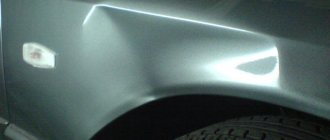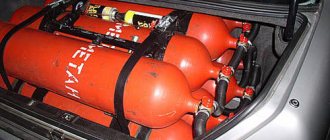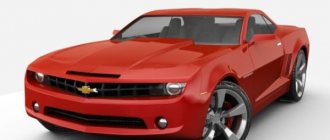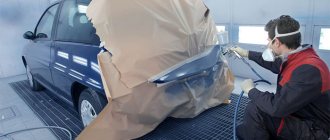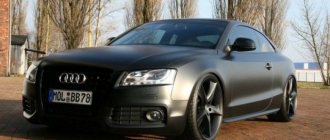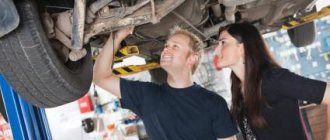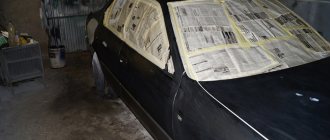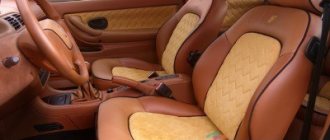Immersion printing technology, or hydrographic printing, first appeared in Japan several decades ago. Now this technology has been mastered all over the world. It allows you to apply various designs to any surface and material using water. Glass, porcelain, various metals, plastics, rubber, and wood are susceptible to this effect. In order for immersion printing at home to generate good income, you need to know all the nuances of this business. In addition, it is worth carefully studying all the features of the equipment and materials used for printing.
What is aquaprint?
First of all, you need to find out what aquaprint is. Aquaprint (or water-immersion printing) is a technology for covering the outer surface of an object with a decorative film. The film is a special polymer base on which some kind of ornament or texture is printed: when the material is placed on water and treated with an activator, this base dissolves and the ink continues to float on the surface. If you immerse the workpiece in liquid, the paint in the form of a thin layer will stick to it, preserving the original image. Then the part is dried and coated with a protective varnish.
Thanks to surface tension, water becomes an ideal matrix that accurately repeats any complex shape of the product. The end result of using immersion printing impresses even specialists:
- The pattern evenly covers the entire surface of the workpiece;
- At first glance, the texture is difficult to distinguish from the material it imitates;
- The coating protects the surface of the part from scratches, chips and abrasions;
- Aquaprint can withstand aggressive influences no worse than plastic.
Types of aquaprint
There are hundreds of types of film depending on the texture - wood, carbon, metal, etc. But according to the degree of transparency, all films are divided into:
- Opaque (rarely used).
- Translucent - when applied, the background color plays a role.
- Transparent – the background color plays the main role.
This technology allows you to give any surface any color or shade - carbon, wood, drops, Khokhloma, etc. And for those who ask where to do car tuning and how much it costs to waterproof a car in Moscow, we will answer that the price of waterprinting depends on the area and the complexity of the part configuration, and you can improve the appearance of the car qualitatively and inexpensively in any of the StyleGarage tuning studios.
Areas of application of aquaprint
Considering the features of the technology, it can be noted that aquaprint is a universal coating that best fits on:
- Plastic and polymer materials;
- Metals and alloys;
- Ceramics and glass;
- Wood, plywood and MDF.
Thus, you can apply an aquaprint with your own hands on any smooth and hard surface. Immersion printing is most often used to decorate:
- Body and interior parts of vehicles - cars, motorcycles and scooters. The rims look original after the water print;
- Furniture surfaces - countertops, facades, fittings. The film is also applied to doors, plumbing parts, sockets, window profiles and mirror frames;
- Household appliances - audio equipment housings, kettles, refrigerators, chandeliers, fans, coffee makers;
- Electronics - phone and laptop covers, tablets, mice, scanners, keyboards, game consoles;
- Elements of weapons - barrels, butts of guns, parts of crossbows. In addition to imitation wood, camouflage colors are used in these cases;
- Sports equipment - ski and motorcycle helmets, hoverboards, scooters, skateboards, snowboards and surfboards, alpine skis;
- Advertising designs. Using aquaprint you can decorate display cases and counters, light boxes and signs;
- Musical instruments. Most often, owners of electric guitars and drum kits are interested in aquaprint.
Even when applying an aquaprint with your own hands, the technology guarantees the preservation of the appearance of the part for at least 10 years. This stability is ensured by covering the design with several layers of durable automotive varnish. The resulting finished image:
- Withstands temperature changes in the range from -45 to +50°C;
- Becomes resistant to ultraviolet radiation;
- It is not damaged when washed with steam or a high-pressure apparatus;
- Not afraid of sea water and solvents.
Benefits of technology
- Unique design. You can use more than 200 types of textures and more than 12 thousand combinations to decorate the interior of the cabin or rims.
- Durability of the coating.
- Affordable price. Our cost for ordering waterprint work according to the price list for waterprint coating is available to all car owners.
- Resistance to sunlight, chemicals, temperature changes from -40 to +100°C and other aggressive environments.
- Aesthetic appearance.
- Possibility of application to almost any material - metal, wood, plastic, glass, etc.
Advantages and disadvantages of business
Despite the fact that aquaprint technology was patented almost forty years ago, it has become widespread among small businesses only in recent years. Therefore, many entrepreneurs still have no idea how such a service can be beneficial.
The advantages of immersion printing look like this:
- The business is considered profitable. Considering how much aquaprint film costs, we can assume that the profitability of the service will be several hundred percent;
- The technology is generating interest among consumers. The target audience includes not only car enthusiasts, but also designers, gadget owners, and athletes;
- The workshop does not require significant investment. When using a minimum set of equipment for water printing, you can invest 100,000 rubles;
- The market is far from full. This is due to poor awareness of citizens about the service and a lack of qualified specialists.
This technology has fewer disadvantages, but for novice entrepreneurs they can also be significant:
- Coating is a delicate and responsible process. Therefore, the entrepreneur will have to acquire the necessary skills himself or look for a master;
- Due to the high cost of work, aquaprint may not be in enough demand among people experiencing financial problems.
Aquaprint technology
Why is immersion printing so beneficial? The fact is that almost all operations for preparing the part and applying the design are performed manually, which requires a highly qualified craftsman. How to make aquaprint at home:
- The part is dismantled, washed with a brush and dried. If the technician cannot remove the element on his own, it is better to contact a specialist;
- The surface is treated with emery cloth, Scotch Brite and polishing discs. Cracks and scratches are covered with epoxy putty;
- The part is carefully degreased with a solvent, being careful not to damage the plastic. Any traces of the old coating must be removed;
- The cleaned surface is covered with a binder (composition for better adhesion). You can use both a spray gun and a brush;
- The part is primed in one or two layers. After the primer has dried, the surface is again treated with fine sandpaper (it should be smooth);
- After repeated degreasing, the base color is applied. It will be visible through the transparent film, so the entire surface must be painted evenly;
- The workpiece is placed in a drying cabinet or under IR drying. The paint will dry in a couple of hours at high temperatures;
- At this time, the water in the bath for applying the pattern is heated to 28–34°C. The thicker the film, the higher the temperature should be;
- A rectangle is cut out of the film with sides 3–5 cm larger than the maximum dimensions of the workpiece. To prevent the material from curling, the edges are glued with tape;
- You don’t have to use tape if you make short cuts around the perimeter of the piece every 1.5–2 cm;
- Do-it-yourself aquaprint film is carefully placed on the surface of the water, sticky side down. If you mix up the sides, the material will immediately blur;
- In the first minute, until the film softens, you also need to use careful movements to expel any air bubbles trapped under the material;
- 2–2.5 minutes after immersion, the activator is evenly applied to the surface of the film from the spray gun. After 5–10 seconds, the base is completely dissolved;
- From this moment the master has 2–3 minutes at his disposal to make an aquaprint: as a rule, later the film dries out and loses its adhesive properties;
- Starting from the sharpest angle, the workpiece is immersed smoothly and without jerking into water through the film at an angle of 40–60°. The immersion speed should be 2–2.5 cm/s;
- The part is immediately removed from the bath and the quality of the film application is visually assessed. If there are defects or bubbles, the coating will have to be washed off;
- In a rinsing bath with warm water, carefully wash off the remaining polyvinyl base from the surface. In this case, the film should not be touched with hands or a sponge;
- The workpiece is dried until the moisture has completely evaporated and the coating has hardened. The easiest way is to use a drying chamber;
- The surface of the part is coated with matte or glossy varnish in 3–5 layers, with each layer thoroughly dried;
- If necessary, the varnish is sanded with fine-grained abrasives and polished with a machine, removing drips and sagging.
The final result depends on many nuances, so the entrepreneur will have to understand in detail how to make an aquaprint himself and not spoil the film.
Experienced craftsmen note that:
- The film will not adhere to surfaces covered with dust or finger stains;
- If the film is exposed to the activator for too long, it will wash off;
- If the activator's validity period is short, the material will stick with bubbles;
- If you add too much activator, it will dissolve both the film and the base paint;
- If there is not enough activator, the material simply will not stick;
- In places where drops of water hit the surface of the film, the material will fall behind;
- If dust particles fall on the surface, holes will form in these places;
- In places where air has gotten under the film, the material will not dissolve or stick;
- Diving at a low angle causes an air cushion to appear;
- Immersion at a large angle causes rupture and deformation of the material;
- By immersing the part too slowly, you can get layers and creases;
- By immersing the workpiece quickly, you can tear the film;
- If you are late with washing, the remainder of the base will harden. You can’t wash it off afterwards;
- In cold water, the activator dries out and does not have time to dissolve the film;
- In hot water, the activator acts too strongly, damaging the paint.
How an image is applied using immersion printing
- Dismantling a car or motorcycle part and thoroughly cleaning the old coating layer (if necessary).
- Sanding, priming and coating the part with background paint. The type of texture obtained is largely determined by the background color. For example, using the same film with different backgrounds, you can get a “wood-like” texture with the color of light alder or ebony.
- A special film with a water-soluble base is distributed over the surface of the water and an activator is applied from a spray gun.
- After dissolving the base in water, a pattern remains. Its application to the part is carried out by manipulators, with which the part is immersed in water at a certain speed, at the required angle of inclination and with the required number of revolutions. As a result, the part is painted with the required texture.
- Applying ceramic varnish to ensure durability of the design.
- Final sanding.
When wondering how much it costs in Moscow to paint a car with water print, keep in mind that the price of water print in the StyleGarage auto studio depends on the area and complexity of the surface of the part and requires an individual calculation.
Workshop assortment
Due to the lack of a formed market, there is no single pricing policy for immersion printing services: each entrepreneur himself determines how much an aquaprint costs. Most often, the workshop price list sets fixed rates for standard parts of known shapes and sizes, and the processing fee for non-standard elements is determined taking into account their dimensions. Here are the average prices in the Moscow region:
Cost of aquaprint
| Product | price, rub. |
| Car interior detail, per cm² | 4–6 |
| Full interior, sedan | 8000–10000 |
| Full interior, SUV | 10000–12000 |
| Full interior, golf class | 5000–7000 |
| Body element, per cm² | 4–6 |
| Motorcycle helmet, bicycle helmet | 6000–8000 |
| Parts of a gun or crossbow | 10000–18000 |
| Musical instrument, per cm² | 6–8 |
| Smartphone case, mouse, laptop cover, per cm² | 8–10 |
| Set of wheels R15 | 15000 |
| Set of wheels R16 | 16000 |
| Set of wheels R17 | 17000 |
| Set of wheels R18 | 18000 |
| Set of wheels R19 | 19000 |
| Set of wheels R20 | 20000 |
| Set of wheels R22 | 22000 |
In general, to determine the cost of work, entrepreneurs are guided by the following rules:
- When calculating the area of a part, the maximum length and width are taken into account;
- The presence of holes does not affect the cost;
- If it is necessary to putty chips and scratches, the price is increased by 20%;
- With a large area of elements, it is practiced to provide a discount of up to 50%.
Business registration
Is it necessary to register aquaprint as a business? Until the entrepreneur has assessed the level of demand and demand for the service, it is easier for him to work informally. But as soon as the workshop starts advertising and attracting customers, the tax authorities will immediately pay attention to it. To avoid complications at this stage, it is recommended to submit documents for registration of individual entrepreneurs.
Immersion printing is not yet classified by law as an independent type of activity, therefore, when legalizing a business, the following OKVED codes should be indicated:
OKVED codes for aquaprint
| 18.12 | Printing on textiles, plastic, glass, metal, wood and ceramics |
| 25.61 | Metal processing and metal coating |
| 45.20 | Vehicle maintenance and repair |
These codes allow the use of preferential tax systems. In general, the following options can be used for an aquaprint application workshop:
- USN. At a rate of 6% on income and turnover of 250 thousand rubles, the tax amount will be 15,360 rubles per month;
- UTII. According to the imputed income, the tax amount will be 2,690 rubles per month;
- PSN. The cost of a patent will be 2,400 rubles per month.
In addition to standard notifications from Rospotrebnadzor and the Fire Service, you do not need to obtain any additional permits, licenses or certificates to provide aquaprint services.
Workshop space
As a business idea, aquaprint is characterized by minimal requirements for workshop space: a basic set of equipment can even be placed in a garage or shed. When working with car enthusiasts, the location of the premises does not matter. However, transport accessibility is necessary to serve customers who want to coat gadgets, musical instruments or sports equipment.
In general, 30–40 m² is enough to set up a workshop. To prevent dust and paint from getting onto the clean surfaces of the workpieces, the area should be divided into zones:
- Area for preparation and grinding of parts;
- Painting area;
- Area for applying aquaprint;
- Warehouse of materials and finished products.
It is not necessary to do repairs in a workshop. The main thing is to ensure that the premises meet the requirements of the technological process. What you need for aquaprint:
- The room must be dry and clean. To finish surfaces, you should use materials that do not create dust - metal, tiles, oil paint;
- Heating must be provided. The air temperature should always be in the range of 18–24°C with a humidity of 45–70%;
- The workshop must be connected to an electrical network with a power of at least 6–8 kW;
- Work requires water supply and sewerage. In the absence of a warm water supply, a heating system (flow-through or storage boiler) should be installed;
- The workshop must be equipped with supply and exhaust ventilation and a dust removal system after grinding;
- The illumination in the sanding, painting and waterprinting areas should be at least 500 lux.
Equipment for aquaprint
To apply the film to the surface of the part, you need a special heated bath. Theoretically, you can assemble such equipment for aquaprinting with your own hands, however, it is easier to buy one of the installations offered by suppliers. The professional container for processing large workpieces is equipped with the following elements:
- Corrosion-resistant aluminum or stainless steel housing;
- Automatic heating control unit;
- Heating element with a power of 4 kW;
- Water temperature sensor;
- Water circulation pump;
- Pipeline system;
- Filter elements;
- Guide rails for fixing the film.
In addition to the aquaprint bath, the workshop must be equipped with equipment for preliminary and finishing processing of parts, engineering systems and furniture:
Equipment for aquaprint
| Position | price, rub. | Quantity, pcs. | Amount, rub. |
| General systems | |||
| General lighting | – | – | 15000 |
| Water supply and sewerage | – | – | 12000 |
| Wiring | – | – | 10000 |
| Supply and exhaust ventilation | – | – | 12000 |
| CCTV | – | – | 10000 |
| Fire extinguisher | 2400 | 1 | 2400 |
| Basic equipment | |||
| Bath for aqua print | 69900 | 1 | 69900 |
| Washing bath | 18600 | 1 | 18600 |
| Compressor | 24800 | 1 | 24800 |
| Immersion stand | 95000 | 1 | 95000 |
| Spray gun for activator | 3500 | 1 | 3500 |
| Spray gun for varnish | 3500 | 1 | 3500 |
| Spray gun for soil | 3500 | 1 | 3500 |
| Painting stand | 55600 | 1 | 55600 |
| IR drying | 22900 | 1 | 22900 |
| Drying chamber | 39000 | 1 | 39000 |
| Airbrush | 2100 | 1 | 2100 |
| Moisture separating filter | 1600 | 1 | 1600 |
| Pneumatic Tool Connector | 320 | 2 | 640 |
| Pneumatic hose | 1890 | 2 | 3780 |
| Blow gun | 480 | 2 | 960 |
| Retaining clip | 650 | 4 | 2600 |
| Tool for repairing plastic | 10900 | 1 | 10900 |
| Cutter | 2800 | 1 | 2800 |
| Tools for dismantling parts | 690 | 1 | 690 |
| Sander | 4500 | 1 | 4500 |
| Polishing machine | 7300 | 1 | 7300 |
| electronic scales | 800 | 1 | 800 |
| Timer | 300 | 1 | 300 |
| Vise | 6500 | 1 | 6500 |
| Crafting table | 4800 | 1 | 4800 |
| Painter's overalls | 290 | 2 | 580 |
| Respirator | 1900 | 2 | 3800 |
| Office equipment | |||
| Computer | 16800 | 1 | 16800 |
| Router | 2200 | 1 | 2200 |
| Printer | 5300 | 1 | 5300 |
| Stationery | – | – | 4000 |
| Additional equipment | |||
| Table | 1800 | 1 | 1800 |
| Chair | 750 | 4 | 3000 |
| Film catalog | 2900 | 1 | 2900 |
| Samples | 90 | 10 | 900 |
| Film rack | 2200 | 1 | 2200 |
| Rack for consumables | 2200 | 1 | 2200 |
| Rack for finished products | 2200 | 1 | 2200 |
| Microwave oven | 2300 | 1 | 2300 |
| Water heater | 6500 | 1 | 6500 |
| Electric kettle | 750 | 1 | 750 |
| Hanger | 1300 | 1 | 1300 |
| Bathroom set | 11000 | 1 | 11000 |
| Total: | 517700 | ||
Materials and equipment required for printing
To carry out the technological process, you will need to prepare equipment for aquaprinting. You can purchase used equipment or get a new one. Basic elements for production:
- a spacious tank with a volume sufficient to completely immerse the part;
- container for washing finished decorated products;
- special film for transferring the image;
- a set of devices and tools for the preparatory stage - rough surface treatment and grinding;
- film activators, several different paints and topcoat;
- spray gun - a spray gun or compressor with a spray gun and a spray nozzle of a certain diameter.
A surface with old worn-out paint or with chips is sanded and thoroughly sanded before priming. Having removed all dirt and roughness from the part, the surface is degreased and coated with a base color.
This is interesting: How to connect a rear view camera to a car: detailed instructions and tips
Since to carry out the immersion printing process, you need to observe a strict temperature regime (29-32 degrees). To do this, it is better to get a thermometer (mercury or alcohol) and an electric industrial boiler with a heating sensor. The thermometer is fixed on the surface of the liquid for constant monitoring. A boiler will be required to temporarily turn on and heat the water to the desired temperature.
An old bathtub is suitable for performing the technical process. You can make the container yourself from a barrel by sawing it vertically and installing it on clamps in the form of a platform. The second half can be adapted for washing products.
To drain the waste liquid, wash the tank and fill the bath, install a pipeline with a drain and a water supply system with taps for warm and cold water. If the production is located in a room without a central communications connection, then a special filter and pump are cut into the pipeline. An additional reservoir is installed into which the pump will pump the filtered solution. This will allow the process to be carried out on the principle of circulation of filtered liquid.
Consumables for aquaprint
When listing what is needed for aquaprinting at home, it is necessary to dwell specifically on films. Suppliers today offer an unlimited range of materials depicting wood, marble and granite, fiberglass, crocodile and snake skin, camouflage, abstract designs, patterns and textures. When purchasing, you should take into account not only the pattern and thickness of the film, but also the width of the roll: the material should cover the part with a margin of 3–5 cm.
If you remember how aquaprint is made, you can understand that film is, although the main, but not the only material that is used in the process. To prepare the part for decoration and subsequent finishing you will need:
Necessary materials for aquaprint
| Position | Price | Consumption per 1 m² | price, rub. |
| Materials for drawing | |||
| Film for aquaprint 50cm | 160 rub./m | 2.5 m | 400 |
| Activator | 650 rub./l | 60 ml | 39 |
| Latex gloves | 3 RUR/pcs. | 1 PC. | 3 |
| Materials for preparing the part | |||
| Sandpaper | 15 RUR/pcs. | 3 pcs. | 45 |
| Grinding wheel | 20 rub./pcs. | 3 pcs. | 60 |
| Polishing wheel | 220 RUR/pcs. | 0.1 pcs. | 22 |
| Painting materials | |||
| Binder for base enamel | 890 rub./l | 150 ml | 133 |
| Primer for metal | 800 rub./l | 160 ml | 128 |
| Primer for plastic | 930 rub./l | 160 ml | 148 |
| Epoxy primer | 790 RUR/kg | 200 g | 158 |
| Plastic restoration glue | 1350 rub./l | 200 ml | 270 |
| Base paint white | 1200 rub./l | 200 ml | 240 |
| Metallic base paint | 1850 rub./l | 200 ml | 370 |
| Candy concentrate in a set | 1770 RUR/pcs. | 0.1 pcs. | 177 |
| Polishing paste | 1890 RUR/kg | 100 g | 189 |
| Solvent for varnishes | 60 rub./l | 0.25 l | 15 |
| Degreaser | 780 rub./l | 0.25 l | 195 |
| Gloss varnish | 790 rub./l | 200 ml | 158 |
| Matt lacquer | 930 rub./l | 200 ml | 186 |
| Scotch Brite | 120 RUR/pcs. | 0.2 pcs. | 24 |
| Masking tape | 2 rub./m | 25 m | 50 |
| Mattifying sponge | 60 rub./pcs. | 1 PC. | 60 |
Thus, the cost of materials for waterprinting per square meter of surface is 1,761–2,544 rubles.
How to make an aquaprint with your own hands at home? Tuning for real
How to make an aquaprint with your own hands at home?
To answer this question you need to understand what it is. In fact, waterprint is a type of water immersion printing. Using this method, you can imitate a variety of surfaces. Moreover, it can be applied to any surface, customized to the design features. This method of decoration was actively used in Japan at the end of the last century.
Now, it has gained unprecedented popularity among craftsmen who are interested in car tuning. The film fits perfectly on all possible surfaces. This allows you to decorate cars of any model. The material practically does not fade, and also, it is not afraid of water. The latter characteristic makes this film popular among yacht owners.
This type of tuning requires quite a lot of different tools that will allow you to carry out this work as accurately as possible. Therefore, stock up on the following devices:
- Water thermometer;
- Electric boiler;
- Bath for water. It must be the right size;
- Compressor;
- Spray.
This is the required minimum. A spray gun may also be required.
It all depends on the volume of work.
An extremely important point is the correct preparation of the part for applying the film to it. This work consists of several stages. The appearance of the car after tuning largely depends on the correctness of their implementation. Preparation is carried out in the following order:
- First, degrease the surface. To do this, wipe the part with a solvent.
Workshop workers
There are two ways to organize the activities of an immersion printing workshop: mastering the technology yourself and finding an experienced specialist.
In the first option, the entrepreneur will have to look for training courses on this topic: many suppliers provide them for free when purchasing a set of equipment. It is also advisable to study master classes and videos published on the Internet. Finally, you can purchase a starter kit for aquaprinting, which includes several types of films and all the necessary reagents.
The second option is more difficult to implement: even in a large city you can only find a couple of dozen immersion printing experts. Therefore, the business owner will have to either send an apprentice to the same courses, or use a third way - learn how to apply the image yourself, and hire an experienced car painter to prepare and paint the parts: fortunately, such masters are more common than waterprint specialists:
Employees of the aquaprint workshop
| Job title | Rate, rub. | Qty | Amount, rub. |
| Painting specialist | 25000 | 1 | 25000 |
| Accountant at ½ rate | 10000 | 1 | 10000 |
| Payroll tax | – | – | 10500 |
| Total: | 45500 | ||
Features of the film
Such decoration is used both in high-status luxury cars and by ordinary car enthusiasts to obtain interesting textures. This is an integral part of fashion among car owners, the decorative function of which is to color enrich the interiors of the same type at minimal cost.
Hydroprinting is much stronger than ordinary vinyl film and the reason for this is the chemical method by which the print is applied, which is its protective function. Printing also has the following advantages:
- Does not respond to changes in temperature and pressure;
- Withstands strong vibrations;
- Protects the car surface and parts from scratches;
- Not exposed to ultraviolet rays;
To buy an aquaprint, you need to pay attention to the manufacturer. Even the high price of the material is not a guarantee of quality. The printing procedure is quite painstaking and largely depends on the quality of the material and equipment. When using a low-quality film or activator, colors may “float”, air bubbles or even holes may form.
You can buy a set for water printing in specialized stores, and you can also buy film for water printing and order it on the website. As a rule, it is more rational to order materials as a set, since the activator is from the same company as the film. This affects the print quality and facilitates the film application procedure itself.
Do you know that there is a modern car film: types, colors and prices. Find out all about the types of films for cars and choose only the best!
Workshop promotion
Promoting an immersion printing studio is much more difficult than a tire service or service station: few potential clients know what results can be obtained and how to use waterprint. Therefore, advertising materials must not only offer services, but also provide a visual representation of the benefits of this technology. Here is a short list of possible marketing activities:
- The workshop needs a visible sign. In addition to the name, it must contain a brief description of the service in a few words;
- Booklets with colorful images of finished work should be distributed at gas stations, car washes and car markets, car dealerships and tire shops;
- For advertising, it is advisable to apply a water print to the elements of your own car, and indicate the name of the service and contact information on the rear window;
- The workshop definitely needs a website. On its pages it should be explained in detail that this is an aquaprint, a list of services and photographs of the work should be published;
- The same information must be duplicated in your own group. In addition, you can hold promotions and competitions for potential clients on the social network;
- It is necessary to post posts and comments on websites and forums of car enthusiasts. If the master answers questions correctly, he will improve his reputation;
- If you have available funds, it is advisable to place contextual advertising with geographic settings limited to your city;
- Finally, recommendations from satisfied customers are the most effective tool for promoting aquaprinting as a business.
Technology for creating water prints
The technology for creating water prints is not particularly complicated.
At the initial stage, the surface is cleaned of dust and degreased. Then it is sanded using special devices.
Next, the base color is applied to it. After this, the master works with the film. There should be no air bubbles left underneath, otherwise the quality of the order will be greatly affected.
It is not difficult to learn the technology of creating water prints on various surfaces.
It is advisable to take several master classes at local tuning studios. Video tutorials posted on the Internet can also help a businessman.
The first orders should be advertising to attract attention to the new service.
For example, you can decorate the back panels of your friends’ phones for free.
If orders are completed efficiently, in the future, clients will themselves turn to the services of the master.
The clients of such a business can be not only owners of foreign cars, motorcycles and owners of fashionable gadgets, but also resellers working in the automobile business.
They are, as a rule, ready to invest heavily in improving the appearance of the vehicles they sell in order to increase its final value.
How much does it cost to open a business?
How much does it cost to open an immersion printing business? The volume of investment depends on the planned scale of activity: at the amateur level, it is quite possible to buy everything for an aquaprint for 80–100 thousand rubles, while at a professional level a bathtub alone will cost that amount. In addition, the entrepreneur will have to purchase consumables and take care of advertising support:
Investment in an aquaprint workshop
| Name | Amount, rub. |
| Registration and paperwork | 800 |
| Workshop equipment | 517700 |
| Consumables | 16280 |
| Connection to water supply and electrical network | 18000 |
| Aquaprint workshop website | 20000 |
| Outdoor advertising | 15000 |
| Printable advertisement | 15000 |
| Administrative costs | 8000 |
| Total: | 610780 |
It is beneficial for a beginner to implement an aquaprint business plan at home, since when renting a premises you will have to pay for it regardless of the profit. However, advertising and utility costs are inevitable in any case:
Video on the topic Video on the topic
Aquaprint workshop expenses
| Article | Amount, rub. |
| Payroll | 45500 |
| IP contributions | 2700 |
| Consumables | 16280 |
| Water and electricity | 25000 |
| Administrative costs | 6000 |
| Communication and Internet | 4000 |
| Advertising support | 20000 |
| Total: | 119480 |
Instructions for applying hydrographic printing
Water printing is a technology for applying special textures to various surfaces that are absolutely identical in appearance to natural wood, stone, metal, camouflage, skins of various animals, etc. Unlike other technologies, immersion printing allows you to work with any hard surfaces and materials: plastic, metal, wood, ceramics and glass.
What you need for aquaprint:
- Film for hydrographic printing is a material with a certain texture.
- An activator is a special active substance that gives the film the necessary elasticity.
- The protective coating is ideally car varnish.
- Primer and paint - are used at the stage of preparing the part and are necessary for better adhesion and to give the desired color.
- The equipment is a technological bath, the size and configuration of which is selected in accordance with the technical characteristics of the workpiece. You can try the technology without equipment; almost any container with water will do to get started, but for professional work and fulfilling client orders, a technological bath is necessary.
- Knowledge of hydrographic printing technology. In general, Akvaprint technology is easy to use. You can start your first acquaintance with it literally at home. But in order to start doing really worthy work of good quality, accepting client orders and making a profit, you need to master hydrographic printing at a more professional level. Therefore, we offer you to undergo technology training at our production facility in Samara.
Aquaprint is a technology accessible to everyone. It can become an interesting hobby or a source of additional income, but the same technology can become the basis of a profitable and promising business. Master aquaprinting with us!
How much can you earn from water printing?
At first, the main clients of the workshop will be car enthusiasts. Assessing actual labor productivity, we can say that two specialists will completely process a car in two days. However, at the start you can hardly expect an intense flow of clients, and therefore in order to develop an aquaprint business plan that is adequate to reality, you should reduce the estimated workload by at least one and a half times:
- The workshop will service two cars per week (8 cars per month);
- The average surface area to be treated will be 8000 cm²;
- The cost of consumables per client is 2035 rubles;
- The total cost of covering one car at a tariff of 4 rubles/cm² is 32,000 rubles.
Now you can determine how much profit an immersion printing business will bring and how quickly the initial investment will pay off:
Calculation of the payback of aquaprint
| Article | Meaning |
| Gross income, rub. | 256000 |
| Costs per month, rub. | 119480 |
| Tax base, rub. | 136520 |
| PSN tax, rub. | 2400 |
| Net profit, rub. | 134120 |
| Profitability, % | 112 |
| Investments, rub. | 610780 |
| Payback period, months | 4,5 |
